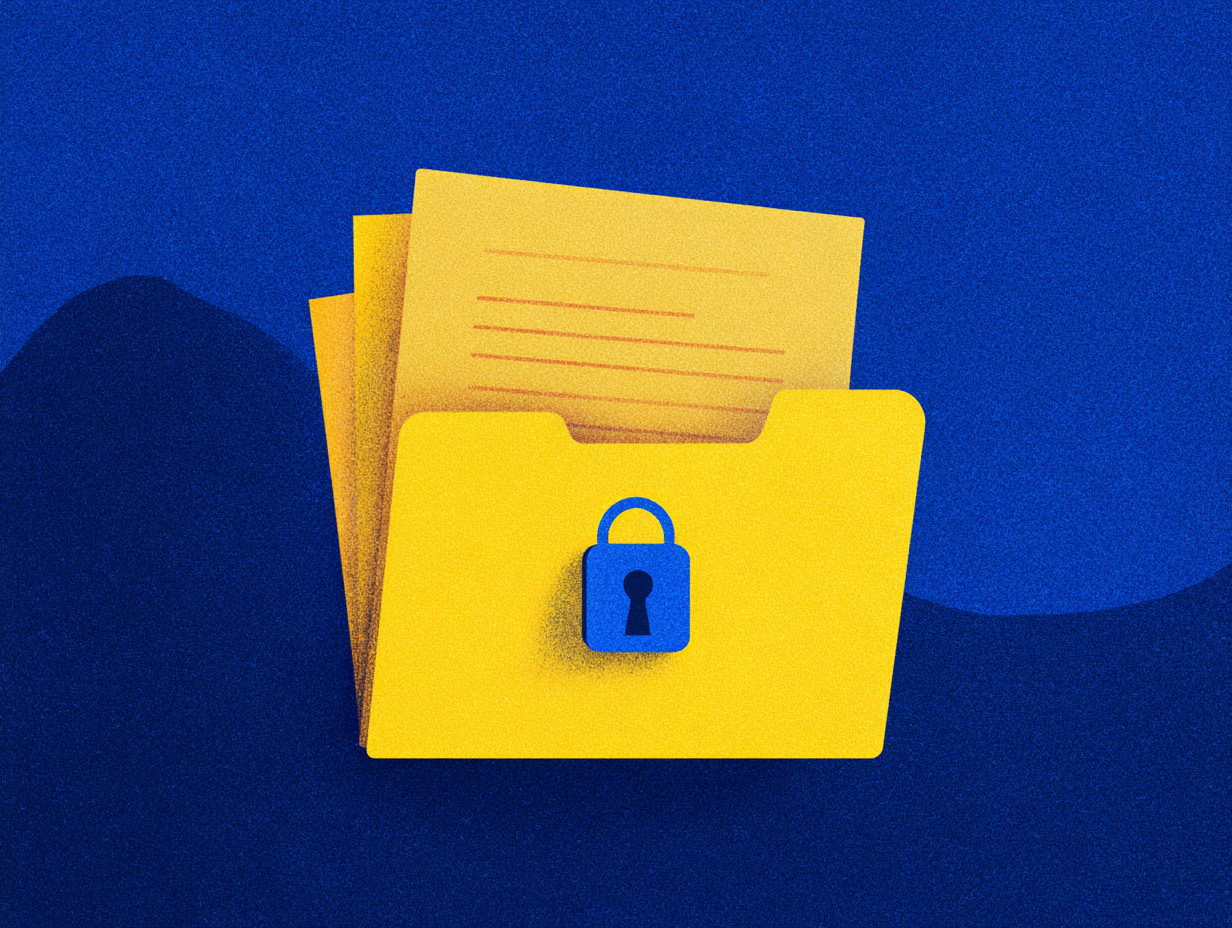
Secure File Transfer: A Guide to Protecting Your Data
What Is Secure File Transfer: A Modern Update to Definition
Secure file transfer is data sharing via a secure, reliable delivery method that uses encryption, authentication, access controls, and auditing to protect files in transit when securely accessing, transferring and managing large files. By leveraging robust protocols, secure file sharing is the practice of transferring files to ensure compliance with industry standards and governance policies. Ultimately, secure file transfers are a way to safely share data across networks and guard against unauthorized access, interception, or tampering.
However, many conventional secure file transfer solutions focus solely on protecting data while it’s in transit, preventing interference by third parties yet overlooking the risks posed by the service provider hosting your solution.
In this blog, we’ll explore the limitations of the current secure file transfer definition and discuss how to redefine it to ensure stronger file security.
Five Main Benefits of Securely Transferring Files in the Modern Digital Age
Secure file transfer is not just about keeping your data safe, it’s an essential component for ensuring business continuity. By adopting secure file transfer practices, organizations can protect sensitive information, comply with regulations, and maintain trust with their clients.
Here are the five main reasons why secure file transfer is a must in modern days.
Benefit 1: Guarding Against Cyber Threats
Cyber criminals actively target insecure data transfers to intercept sensitive information, causing financial losses and reputational damage.
Secure file transfer protocols help organizations mitigate these risks.
Here are three consequences of unprotected file transfers for organizations, backed by real-life examples.
Risk of Data Leaks: Utilizing unprotected channels for file transfers opens the door to data interception. For instance, the 2023 MOVEit data breach exploited a vulnerability in the file transfer software, compromising data from numerous organizations and affecting millions of individuals.
Evolving Threat Landscape: Cyber threats are continually advancing in sophistication. Implementing robust encryption protocols and multi-factor authentication is essential to mitigate these evolving risks. The Accellion data breach serves as a pertinent example, where vulnerabilities in legacy file transfer systems were exploited, impacting over 100 companies and government agencies.
Case Studies and Data: Reference industry reports that highlight the impact of cyberattacks on businesses, showing how secure file transfer minimizes such vulnerabilities.
Benefit 2: Meeting Regulatory Standards in 2025
Many industries are governed by strict data protection regulations that mandate the secure handling of sensitive information.
Secure file transfer helps ensure compliance with geographic and industry-specific standards.
Compliance Requirements: Compliance with data protection regulations is essential for organizations handling sensitive information. Regulations such as the General Data Protection Regulation (GDPR), Health Insurance Portability and Accountability Act (HIPAA), and Payment Card Industry Data Security Standard (PCI DSS) establish specific guidelines to ensure data security.
Non-compliance can result in hefty fines and legal challenges. Secure transfer protocols help mitigate compliance risks. Therefore, implementing secure file transfer solutions is essential for meeting these standards.
- In August 2024, Uber faced a significant penalty under the General Data Protection Regulation (GDPR) for improper data transfer practices. The Dutch Data Protection Authority (DPA) fined Uber €290 million ($324 million) for transferring European drivers' personal data to the United States without adequate safeguards.
Benefit 3: Maintaining Data Integrity
Ensuring that data remains unaltered during transfer is essential for operational reliability and trust.
Data Consistency: Secure file transfer mechanisms utilize encryption and integrity checks to verify that the data received is identical to the data sent, preventing unauthorized modifications.
Timestamp and Tracking: Implementing audit trails and logs that record when data is sent and received ensures full transparency and accountability in data transfers.
Error Prevention: Secure methods often include error-checking features that help prevent data corruption and loss during the transfer process.
At TransferChain, we mitigate data corruption and loss by integrating RAID-based error correction and Reed-Solomon encoding, ensuring that even if a portion of the data is lost or corrupted, it can be reconstructed without integrity compromise.
Additionally, our geolocational redundancy strategy ensures that files are distributed across multiple storage locations, preventing single points of failure. This approach not only enhances data resilience but also ensures uninterrupted availability, even in cases of hardware failures or network disruptions.
Click here to see more about the security algorithms that TransferChain uses.
Benefit 4: Building Trust and Reputation
Protecting customer data is paramount, and secure file transfers play a key role in reinforcing trust.
Customer Confidence: When clients know that their sensitive information is safeguarded, it builds loyalty and enhances the company’s reputation.
Brand Integrity: A data breach can severely damage a brand’s image. Proactive security measures help maintain and build a strong brand reputation.
Industry Leadership: Organizations that invest in secure file transfer demonstrate leadership in security best practices, potentially setting industry standards.
Benefit 5: Supporting Remote Work
The shift to remote work has made secure file transfer more crucial than ever.
Distributed Workforce Challenges: Explain how remote teams require reliable and secure methods to share sensitive documents without risking exposure.
Enhanced Collaboration: Secure file transfer solutions facilitate seamless collaboration among remote workers, ensuring that data is accessible only to authorized personnel.
Future-Proofing Operations: With remote work trends likely to continue, investing in secure file transfer is not only a current need but also a strategic move for future operations.
How to Securely Transfer Files: Best Practices for Maximum Data Protection
Here are certain key practices that you can follow to securely transfer files.
A. Encrypt Data in Transit and at Rest
Encryption in Transit: Use protocols that encrypt data as it travels over the network. This prevents attackers from intercepting and reading your data.
Encryption at Rest: Encrypt files stored on servers or devices. This adds an extra layer of protection if your storage system is compromised.
B. Implement Strong Authentication
Multi-Factor Authentication (MFA): Enhance security by requiring multiple forms of verification, such as passwords combined with biometric data or one-time codes, to confirm user identities.
Public Key Authentication: Employ public key infrastructure (PKI) to authenticate users and devices, offering a more secure alternative to password-based logins by utilizing cryptographic key pairs.
C. Utilize Virtual Private Networks (VPNs)
Secure Tunnels: A VPN creates an encrypted tunnel between the user and the destination server. This is particularly useful for remote access or when transferring files over public networks.
D. Regularly Update and Patch Systems
Security Updates: Keep all software, including file transfer clients and servers, current with the latest security patches to address known vulnerabilities and protect against potential exploits.
Vulnerability Management: Conduct regular scans to identify and remediate security weaknesses within your network and file transfer systems, maintaining a proactive defense posture.
E. Limit Access and Use Least Privilege
Access Controls: Implement role-based access controls (RBAC) to ensure only authorized users can access sensitive files.
Audit Logs: Maintain detailed logs of file transfer activities. Regularly review logs to detect any unauthorized or suspicious activity.
F. Verify File Integrity
Checksum and Hash Verification: Utilize cryptographic hash functions, such as SHA-256, to generate checksums that verify files remain unaltered during transit, ensuring data integrity.
Digital Signatures: Apply digital signatures to authenticate the origin and confirm the integrity of files, providing assurance against tampering.
By implementing these best practices, you not only protect the data during transfer but also bolster your overall security posture. This comprehensive approach minimizes risks associated with data breaches and helps maintain the integrity and confidentiality of your sensitive information.
TransferChain’s Role in Enhancing Secure File Transfer for Businesses
TransferChain is a Swiss-based security and privacy company specializing in secure file transfer. It provides a modern solution to secure file-sharing challenges by combining blockchain’s robust security with advanced zero-knowledge encryption. This approach ensures data privacy by distributing fragments of information across multiple locations, eliminating single points of failure and unauthorized access.
What Sets TransferChain Apart from It's Alternatives
- Zero-Knowledge Encryption: Every file is protected with client-side and end-to-end encryption, ensuring that even TransferChain cannot access your data. This guarantees absolute privacy.
- Distributed Storage: Encrypted files are split into smaller parts and stored across multiple secure locations. This reduces risk by preventing a single point of failure and protecting files from unauthorized access.
- Blockchain-Powered Security: File transfer metadata is recorded on a secure blockchain ledger. This creates an unchangeable audit trail, protecting data from tampering and ensuring top-level security.
- Intuitive User Interface: Despite its advanced technology, TransferChain is designed with ease-of-use in mind, ensuring a smooth experience for all users.
By selecting TransferChain, businesses are not just opting for another file-sharing method—they are investing in a future-proof data security strategy.
Enterprise-Grade Features TransferChain Include:
- Zero-Knowledge Encryption
- Secure and Private File Sharing
- Encrypted, Distributed Cloud Storage
- Blockchain-Based Authorization
- Detailed Activity Tracking and Session Controls via Admin Panel and SIEM
- Data Residency Options
- Advanced Administrative Controls
- Personalized Staff Training and Priority Support
- Integration with TransferChain for Outlook
- Helping customers achieve compliance with stringent regulations such as GDPR, TISAX, LPPD, and ISO-27001.
For businesses seeking a secure and comprehensive file-sharing solution, TransferChain delivers unmatched protection and ease of use.
Click here to start sending your files securely.
Frequently Asked Questions (FAQs)
What Is the Most Secure File Transfer?
The most secure file transfer method uses end-to-end encryption, zero-knowledge security, and a distributed storage approach to eliminate single points of failure. Traditional solutions focus primarily on encryption during transit, but true security requires protecting files before, during, and after transfer. Advanced methods ensure that even service providers cannot access the data, reducing the risk of breaches and unauthorized access.
How To Transfer Files Securely?
Secure file transfer requires encryption at every stage, from storage to transmission. Strong authentication methods, such as multi-factor authentication and public key infrastructure, help verify user identities and prevent unauthorized access. Using private and encrypted network connections minimizes exposure to threats, while regular security updates address vulnerabilities before they can be exploited. Implementing strict access controls ensures that only authorized users can handle sensitive files, and verification mechanisms like cryptographic checksums confirm that files remain unchanged during transfer.
What Is a Secure File Transfer System?
A secure file transfer system is a solution designed to protect files from unauthorized access, interception, or tampering while they are being sent or received. These systems use encryption protocols, authentication measures, and access controls to maintain confidentiality and integrity. They also include compliance features that help businesses meet regulatory requirements such as GDPR, HIPAA, and PCI-DSS. Modern secure file transfer systems integrate audit logs and activity tracking to provide transparency and accountability.
Is SCP File Transfer Secure?
SCP (Secure Copy Protocol) is considered secure because it encrypts data using SSH (Secure Shell), preventing interception during transfer. However, it has limitations compared to more advanced protocols like SFTP, which offer additional file management capabilities and better flexibility for large-scale secure file sharing. While SCP is reliable for quick, point-to-point transfers, organizations requiring more control over access permissions and compliance may need a more comprehensive solution.


